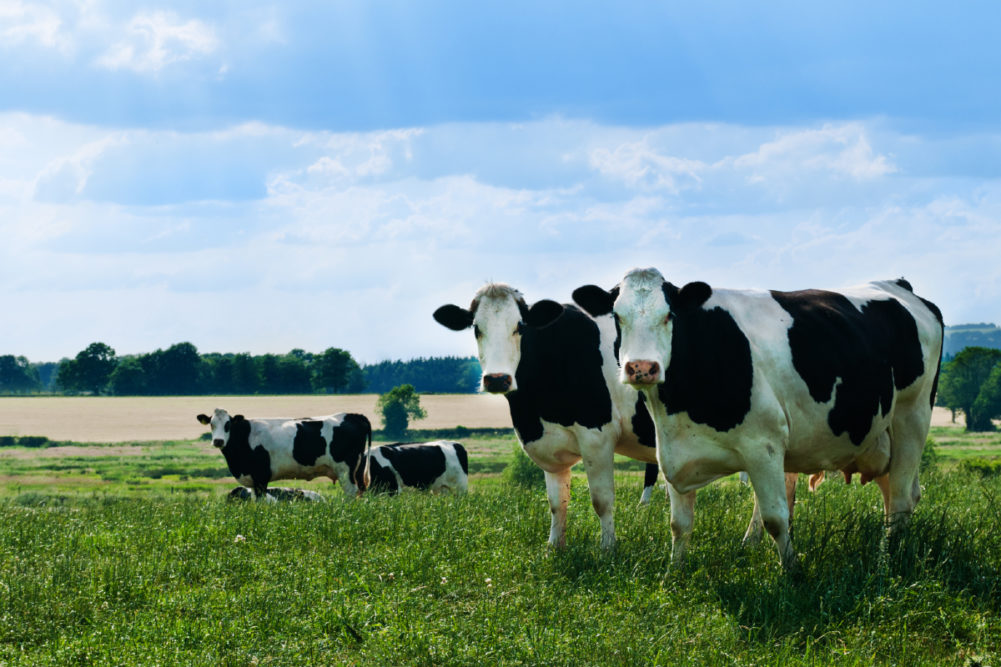WASHINGTON – The US Department of Agriculture (USDA) on May 19 introduced a new assistance program for organic dairy producers to help mitigate challenging factors associated with the industry.
The Organic Dairy Marketing Assistance Program (ODMAP), through USDA’s Farm Service Agency (FSA), is making $104 million available to organic dairy operations to assist with projected marketing costs in 2023.
“Organic dairy producers have faced significant and unique increases in their marketing costs, compounded by increases in feed and transportation costs and the limited availability of organic grain and forage commodities,” said Zach Ducheneaux, FSA administrator. “Without assistance, many organic dairies, particularly small organic dairies, will cease production, which not only impacts the domestic supply and consumption of organic milk but also the well-being of many rural communities across the country. This program will keep our small organic dairies in operation as they continue to weather a combination of challenges outside of their control.”
FSA announced applications for ODMAP will be accepted beginning May 24, and eligible producers include certified organic dairy operations that produce milk from cows, goats and sheep.
A given producer’s projected marketing costs in 2023, FSA said, will be based on its 2022 costs, with ODMAP providing a one-time cost-share payment based on marketing costs on pounds of organic milk marketed in 2022.
Per USDA, ODMAP was developed to provide immediate support to certified organic dairy operations and keep them sustainable until markets return to more normal conditions.
“With unprecedented organic feed costs and inflationary pressures over the last couple of years, resources like ODMAP are really going to matter as farmers plan for the rest of this year,” said Adam Warthesen, co-chair of the Organic Trade Association (OTA) Organic Feedstuffs Relief Task Force, and senior director of government and industry affairs for Organic Valley.
Britt Lundgren, senior director of sustainability and government affairs for Stonyfield, said if USDA had not stepped in the industry would be losing organic dairy farmers.
“We look forward to working with USDA to cover more of the actual costs organic dairies are facing,” Lundgren said.
Lia Sieler, executive director of Western Organic Dairy Producers Alliance, said the “momentary” resources being allocated through ODMAP were needed.
“Farmers are struggling to continue producing a quality, safe and nutritious product with the current costs of doing business,” Sieler said. “We thank USDA with the help of many members of Congress for stepping in, hearing our voices and working diligently to get money pushed out as quick as possible to help alleviate some of this pain. Our work is not done, but this is a major win for our industry in a time of such uncertainty.”
Organic dairy producers can apply by contacting FSA at their local USDA service centers between May 24 and July 24. The ODMAP application process includes submitting the certification of 2022 milk production and documentation of organic certification.
OTA applauded ODMAP, with chief executive officer Tom Chapman saying, “The need is real, and the need is now,” for organic dairy farmers. Chapman credited OTA’s Feedstuff Trade Relief Task Force for advocating to Congress and USDA to address the challenges facing organic farms.
“Family farmers are the foundation of the organic dairy sector, and we are heartened that USDA has recognized the urgency to get the resources out to those in need,” Chapman said. “We look forward to working in partnership with the USDA to ensure full support for the organic dairy sector.”
Per OTA, if every organic dairy farmer in the country applied for ODMAP, the organization anticipated just $30 million would be spent, therefore, OTA also called on the USDA “to work with the industry to release more funds in a timely fashion to ensure that the full allocated amounts reach those dairy farmers in need.”

